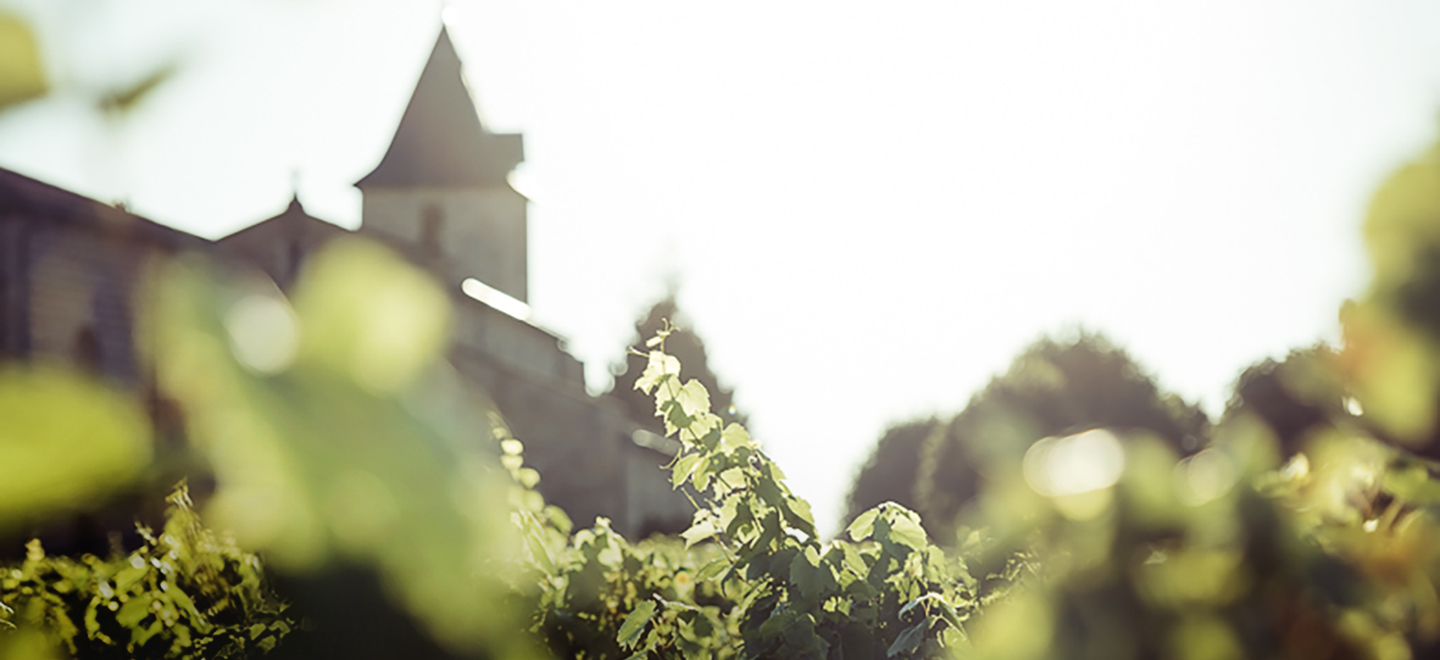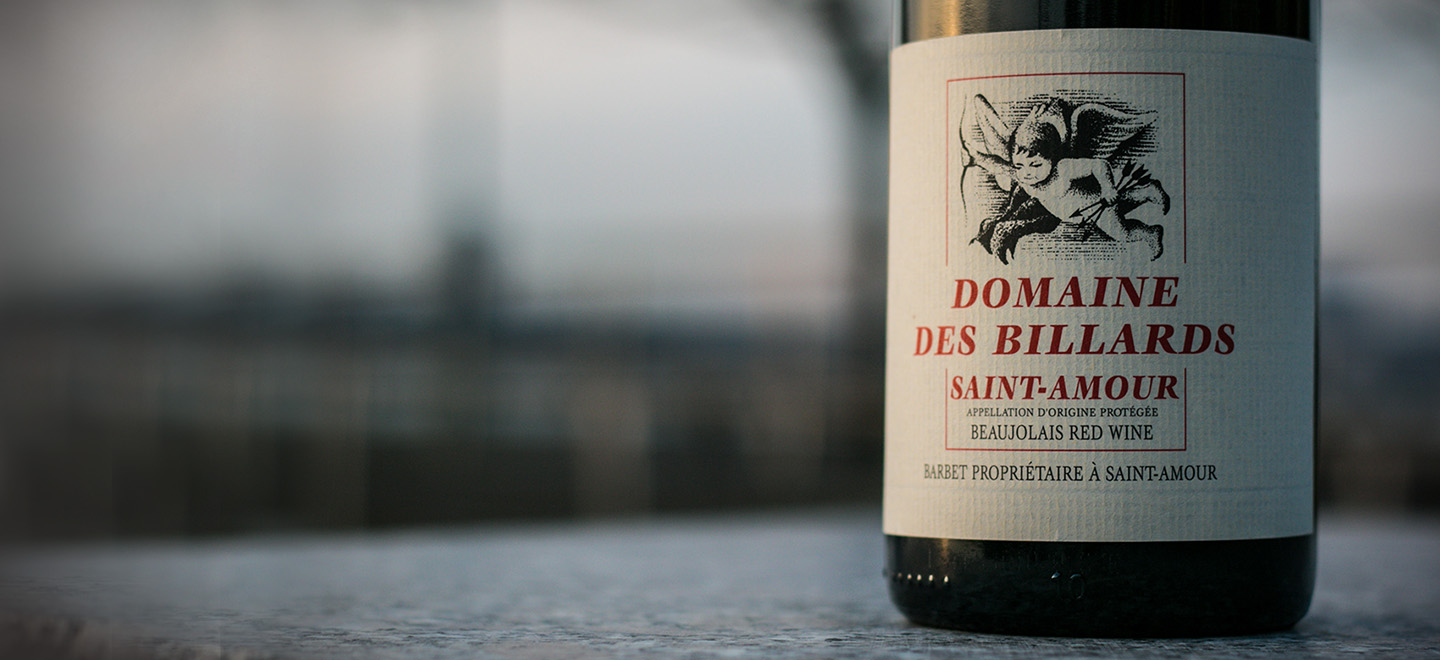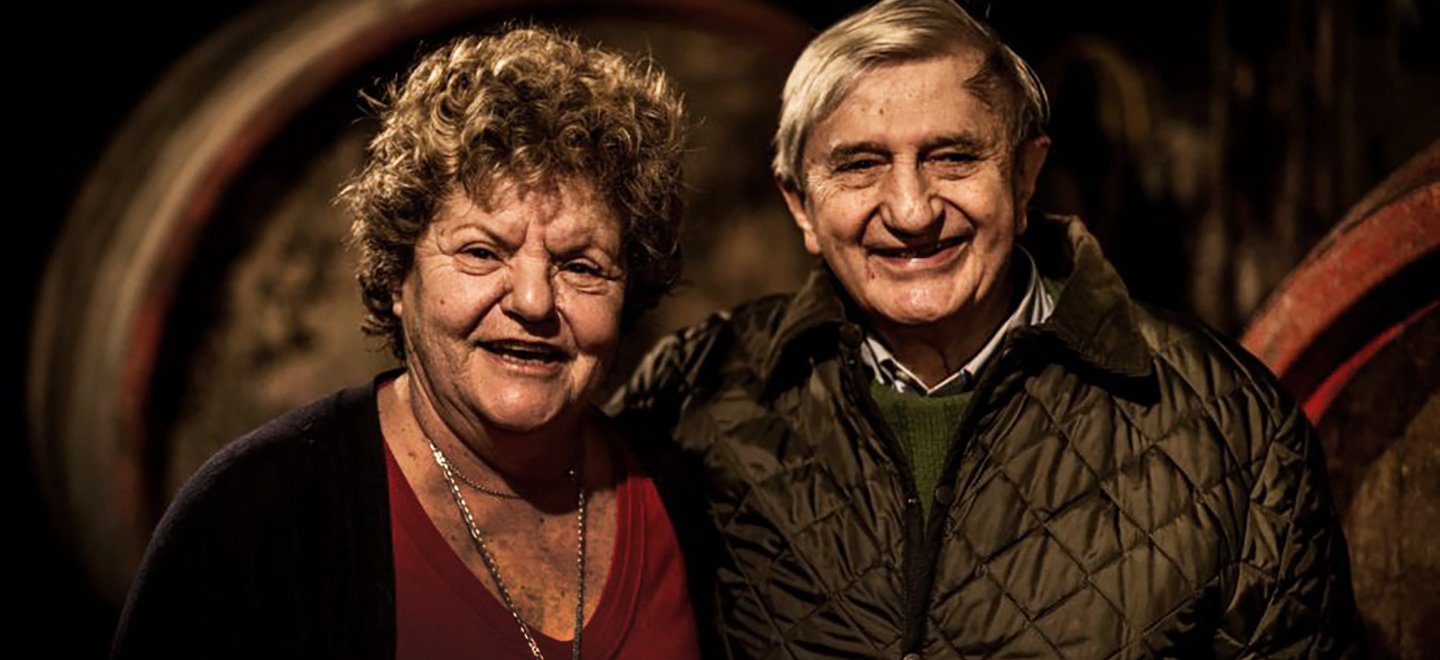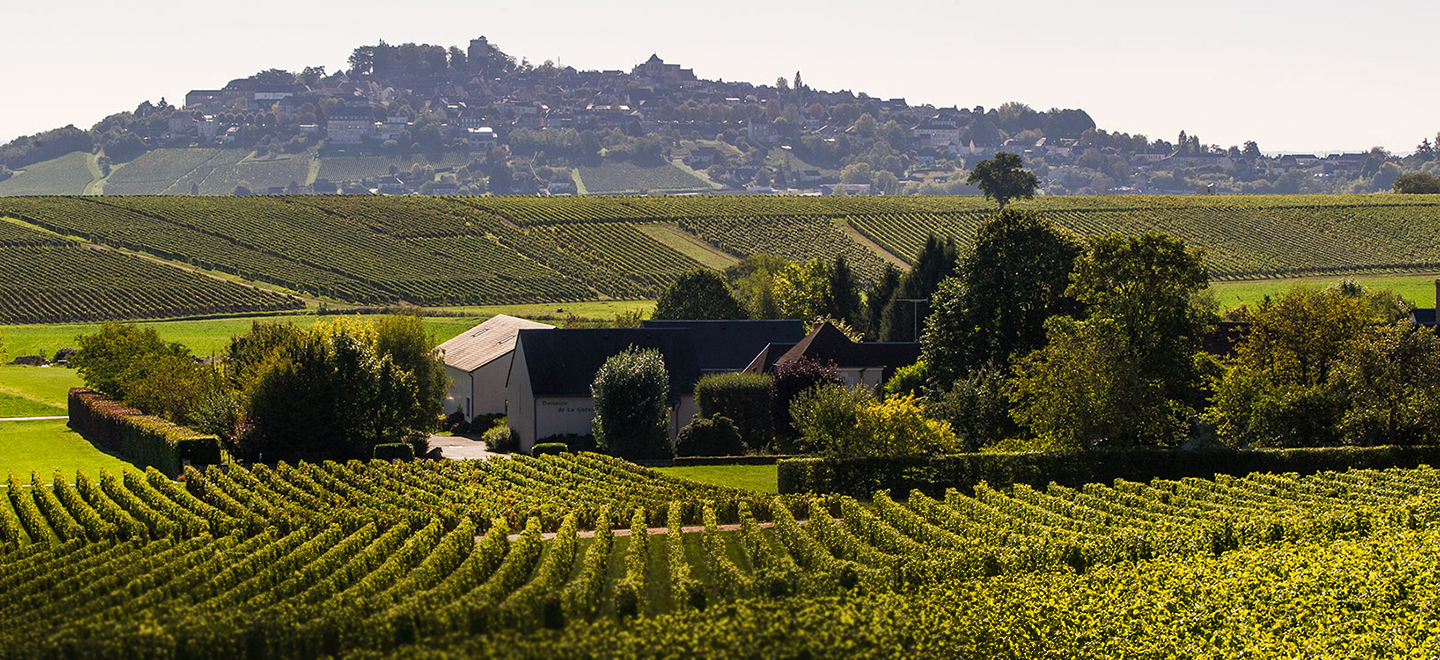Producers
-
Description:
Reinhard Brundig, a successful film producer from Germany, founded Domaine de Courbissac in 2002. What drew him to this property located in the La Livinière sub-zone of Minervois was three-fold: established and well-tended vines, the complexity of the soils, and the proximity to La Montagne Noire. At the heart of Domaine de Courbissac are 90-year-old Grenache, 70-year-old Carignan, and 70-year-old Cinsault, as well as some solidly middle-aged Syrah and Mourvedre around 40 years-old. Farmed biodynamically since 2002, Reinhard has expanded the size of the vineyards, now totaling 30 hectares, by planting some additional Syrah, Grenache, and Mourvèdre.
At the end of 2013, Reinhard partnered with the talented Brunnhilde Claux, a young vigneronne with an impressive resumé. Brunnhilde got her start at Domaine Gauby, where she learned how to handle the natural exuberance of grapes grown in the generous Mediterranean climate. From there, she moved on to Terroir al Limit in the Priorat, where she worked with Dominik Huber for three vintages before Reinhard tapped her to lead Domaine de Courbissac.
With her training and experience making wines at Domaine Gauby and Terroir al Limit, Brunnhilde takes a decidedly hands-off approach at Domaine de Courbissac. She has continued the biodynamic farming practices instituted in 2002, and she harvests each plot and variety separately and manually. The grapes are transported in small bins where they are sorted at the winery. The younger vine fruit is usually destemmed, while older vine fruit is left mostly intact. Fermentations are in concrete vats and well-seasoned, open-top wooden fermenters. If Brunnhilde is fermenting with whole clusters, she will gently layer the fruit in the vat and by foot, press out any air between the bunches. This process releases a small amount of juice, and once the vat is full, she covers it and leaves it to ferment with the natural yeasts present on the grape skins. After 9-12 days of maceration, she presses the wine. Fermentation finishes in the respective aging vessels– mainly 40hl foudres. Unless necessary, SO2 is not used until right before bottling.
This profile, including all tasting notes and photos, was edited from the European Cellars website. For more information please visit: European Cellars.
Image: Region:
Region: -
Description:
In 2013, Gregory Barbet was looking for a house in Beaujolais. Gregory's father, Xavier Barbet, helped with the search and called Gregory one day, saying that he found a beautiful house in Saint-Amour and that he should take a look. There was a catch: the house included a winery that was originally founded in the 1600's and fifteen hectares of vines, all in Saint-Amour. Gregory admits that knowing the amount of work that the winery and vineyards would require, he was a bit intimidated by the project, but in the end, the opportunity was too good to pass up. The family who previously owned Domaine de la Pirolette lived in Lyon and used to sell the wine in bulk. It was a special opportunity for Barbet because the vineyards are in choice parcels on the top of the hill, with little topsoil and the average vine age is 65 years-old. It's also an old winery, that needed work, but a beautiful space to make wine.
Saint-Amour, although it is one of the smallest crus in Beaujolais, has the most diverse terroir. You find blue volcanic schist, granite, pink granite, clay, alluvial fans, and also sandstone from the time that Burgundy was under water. Pirolette has twelve different parcels in three main soil types. Barbet quickly took to converting the vineyards to organic viticulture, not using any herbicides, and in 2019, the vineyards are certified HVE or Haute Valeur Environmentale. They have big parcels in each soil type, so they are lucky to be able to vinify nearly everything by parcel. Some parcels are located on pink granite, which is typically found in Fleurie or Brouilly. This terroir gives wines with fruit and energy. Some parcels are located on blue volcanic soils, similar to the Côte du Py or Côte de Brouilly. Blue volcanic soil gives powerful wines. And some parcels are located on clay with flint which gives peppery notes to the wines.
Winemaking is traditional. The wines are fermented in cement with 50% whole cluster and are very gently extracted using the chapeau grillé method, which simply means keeping the cap submerged with a grate, infusing the skins with the fermenting juice. (Think of this like steeping tea, with the bag in the hot water, letting the flavor come out naturally, versus squeezing the bag, which will make your tea more tannic, the equivalent of punching down in wine.) After fermentation, the classic wine is aged for nine months in stainless steel. Eventually, they are hoping to purchase some large foudres for aging. To eccentuate the special terroirs of Saint-Amour, Barbet is bottling two very special and limited production single-vineyard wines from two parcels, La Poulette and Le Carjot, which are aged in cement eggs and barrels. Each wines has great purity of fruit and really showcases the diverse terroir of Saint-Amour.
BOWLER E-Zine Issue 3 | July 2021: Saint-Amour from Top to Bottom with Gregory Barbet
Image: Region:
Region: -
Description:
Domaine des Billards owns five hectares, all in Saint Amour. It’s one of the original Loron wineries and has belonged to the Barbet and Teissier families for more than 200 years. Saint Amour is one of the smallest crus with 321 hectares under vine and it also happens to have one of the most diverse soils of all of the cru. You find blue volcanic schist, granite, pink granite, clay, alluvial fans, and also sandstone from the time that Burgundy was under water. Billards’ five hectares start mid-slope and are composed of sandstone pebbles, granite outcroppings, and layers of clay. Farming is traditional and natural, with no use of herbicides. The soil is regularly ploughed to develop biodiversity.
In the cellar, the vinification is semi-carbonic and lasts between 12 to 15 days. A weighted grill keeps the cap submerged in the fermenting juice, which gives a very gentle extraction of tannins. The wines are aged in cement tanks.
Pictured right - Xavier Barbet has an ancient parchment accounting book that recorded of a number of prestigious customers in Paris in the 18th Century, among them a sale in 1774 (before the French Revolution!) of ten barrels to Marquis Turgot, Louis XVI’s Finance Minister.
Image: Region:
Region: -
Description:
Côte de Brouilly has a special terroir: “blue” granite is laced with volcanic porphyry, or crystallized mineral deposits. This mixture, combined with the elevation (AOC Côte de Brouilly is confined to the upper vineyards; AOC Brouilly is lower, and far larger), largely accounts for Côte de Brouilly’s highly scented and finely—fine is the adjective that comes to mind—concentrated wines. Winemaking at Chavannes is traditional and simple, with little extraction in the modern sense (Pavillon’s wine could well be labeled the antithesis of modern extracted power). The alcoholic fermentation is done in cement vats, after which the wine goes into foudre for aging. The link to Thivin: Pavillon de Chavannes was acquired by the Jambon-Chanrion family in 1861. Its history became intertwined with that of Château Thivin when Yvonne Chanrion married Claude Geoffray shortly after the First World War; Claude had inherited Thivin, then a small estate. Yvonne took with her one-third of her family’s highly regarded vineyards as an inheritance, and later she acquired her sister’s third as well. Over the years, Yvonne and Claude added to Thivin’s holdings with other land purchases, but the couple never bore children. Yvonne outlived her husband, and upon her death in 1987 the sisters’ original two-thirds inheritance reverted to Paul Jambon of the Jambon-Chanrion family, along with fifty percent of the land Yvonne and Claude had purchased over the course of their marriage. The remainder of the Thivin holdings went to Claude’s great nephew, also named Claude. Nephew Claude further inherited vineyards from his immediate family, enabling him to maintain Thivin’s volume. The Art Deco wine label, created in the 1930s, was a product of that marriage. After Yvonne’s death and the restoration of the Chavanne vineyards, this label became joint property, and now it is used by both domaines under their respective names.
Image: Region:
Region: -
Description:
For more information on Domaine Dupasquier, please visit Selection Massale.
Available in California.
Image: Region:
Region: -
Description:
For more information on Domaine Duplessis, please visit Selection Massale.
Available in California.
Image: Region:
Region: -
Description:
Domaine Eden is a nearby mountaintop wine estate purchased by Mount Eden Vineyards in 2007. It was founded and built by the late Tom Mudd in 1983, and was initially planted with the Mount Eden clonal selections of Chardonnay and Cabernet Sauvignon, which evolved to include Pinot Noir from various Dijon and California selections. The viticulture at Domaine Eden is approached with the same level of naturalness and sustainability as Mount Eden’s estate vineyards. The soils here, however, are different from the estate’s Franciscan shale so even though Domaine Eden is a mere mile away “as the crow flies”, the wines express more varietal fruit with expansive mid-palate flavors than the soil-driven minerality of Mount Eden estate wines. With the differences in vineyard character, the property inspired a new wine brand, Domaine Eden, which focuses on Pinot Noir and Chardonnay from this special site and Bordeaux varieties from Mount Eden’s larger home, the Santa Cruz Mountains.
See Also: Mount Eden Vineyards
Image: Region:
Region: -
Description:
Thank you to importer Louis/Dressner for this profile of the Girard estate:
Domaine Fernand Girard is currently run by Alain Girard. He comes from several generations of winemakers in the tiny village of Chaudoux, located a few miles northwest of the town of Sancerre and directly north of the famous town of Chavignol.
He tends 14 hectares of vines in total, sells some cuvées to négociants and bottles only a portion of the total production under his family name. The "La Garenne" cuvée originally came from a 2.5 hectare vineyard of that name, a plot on a steep east-facing slope with a very rocky limestone soil. The chalky soil brings out the characteristic flinty, mineral and green notes of Sauvignon Blanc. On La Garenne’s well-drained, warm slopes, the grapes achieve exceptional ripeness and fruit.
Over the years, as demand increased, it became clear that Alain would need to blend his sites together to produce more estate wine. Today, only one wine is produced in much larger quantities than when we started working together in the early 1990's. In a crass move of commercialism, it was agreed to keep the name "La Garenne" since it was a "recognizable brand".
Compared to those in other viticultural regions in France, most of Sancerre’s vignerons have stricter than usual standards of cellar tidiness and hygiene. It might be the influence of the local goat cheese making, which was traditionally done on a very small, artisanal scale, by people who knew the importance of a pristine environment.
The Girards have an impeccable cuverie and vinify with modern technology: a pneumatic press, stainless-steel vats, a temperature control system during fermentation, and an air-conditioned space for aging in vats and stocking bottles. They counterbalance technology by practicing old-fashioned vineyard work, where herbicides and treatments are used sparingly, and by never adding commercial yeasts to induce fermentation or add flavors.
Their Sancerre is everything one hopes for when thinking about the region: it is bright, lively, pleasantly aromatic, has zippy acidity but low astringency. It is a wonderful food wine that is as versatile as it is easy to drink.
Image: Region:
Region: -
Description:
For more information on Domaine Santamaria, please visit Selection Massale.
Available in California.
Image: Region:
Region: -
Description:
For more information on Domaine Tripoz, please visit Selection Massale.
Available in California.
Image: Region:
Region:
